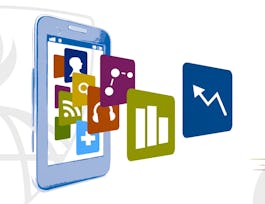This course covers the product development process in detail. With the opportunity defined, learners begin with ideation techniques such as Design Thinking to create new product concepts. Learners define the tools to create product specifications that meet customer requirements, then conceptualize different ways of meeting those requirements. Learners conclude by exploring prototyping and the techniques used to down-select to a concept that is then carried through launch.



Managing the New Product Development Process
This course is part of Product Development for Technical Managers Specialization

Instructor: Michael J. Readey, Ph.D.
Top Instructor
Sponsored by Pontificia Universidad Católica del Perú
Recommended experience
What you'll learn
Learn and apply design thinking tools to the product innovation process.
Develop a product specification that meets critical customer requirements (CCRs).
Learn the tools to generate a variety of product concepts that satisfies the CCRs.
Learn and apply the methods to down-select the many product concepts to the critical few using prototyping and team-based evaluation techniques.
Details to know

Add to your LinkedIn profile
8 assignments
See how employees at top companies are mastering in-demand skills

Build your subject-matter expertise
- Learn new concepts from industry experts
- Gain a foundational understanding of a subject or tool
- Develop job-relevant skills with hands-on projects
- Earn a shareable career certificate


Earn a career certificate
Add this credential to your LinkedIn profile, resume, or CV
Share it on social media and in your performance review

There are 5 modules in this course
This course begins with an overview of topics and course structure. We then explore how to develop creativity within ourselves, as all product development efforts begin with ideas from individuals that see opportunities the rest of us don't. With a creative mindset, we can then begin ideating about product opportunities. Two methods are explored, Design Thinking, and Design-Driven Innovation. Design Thinking is all about understanding customer needs, whereas Design-Driven Innovation is all about understanding the meaning products have on people's lives. Both approaches are effective, yet both are quite different!
What's included
9 videos3 readings3 assignments1 discussion prompt
If product development is all about solving real problems, we need to understand who, in fact, has these problems, as these people are our potential customers. In this module, we define customers, users, markets and market segments. We also define market size terms such as the TAM, SAM and SOM. Now its time to get specific, and create our Customer Persona, a detailed description of our target customer, enabling us to determine how many potential customers are in our target market.
What's included
8 videos3 readings1 assignment2 peer reviews
Understanding the customer's problems allows the product developer to begin thinking about solutions. That process starts with converting customer statements into customer needs, which become Critical Customer Requirements, or CCRs. This defines what the product must do to make the customer happy. Performance metrics are then established and a Product Requirements Matrix defines the most important CCRs, and some target values the product should meet. Finally, knowing what the product should do, it is time to be creative and come up with all the different product ways one can design a product to meet the CCRs, a process known as Concept Generation.
What's included
8 videos3 readings1 assignment1 peer review
Successful concept generation creates many possible product designs, far too many to take forward. This module covers the techniques to downselect many designs to a few. From there, the product development team builds simple prototypes suitable to obtain customer feedback. The simplest of these is often called the Minimum Viable Product, or MVP. Customers can evaluate the MVP to see if the PD Team is on the right track - as MVPs don't cost much money or time to build. With greater confidence with the product concept, the team can build even more refined prototypes, ultimately enabling the final product concept to be defined.
What's included
8 videos2 readings2 assignments1 peer review
Thus far, the course have discussed physical products and physical prototyping. Yet many products are digital, such as digital apps or websites. Prototypes can be made for these products too, although the process is a bit different. In this module, the digital prototyping process is covered, culminating in a prototyping workshop showing students how to use online tools to create their own digital app prototype.
What's included
5 videos6 readings1 assignment
Instructor

Offered by
Why people choose Coursera for their career




Recommended if you're interested in Business

Coursera Project Network

University of Colorado Boulder

Banco Interamericano de Desarrollo

Johns Hopkins University

Open new doors with Coursera Plus
Unlimited access to 10,000+ world-class courses, hands-on projects, and job-ready certificate programs - all included in your subscription
Advance your career with an online degree
Earn a degree from world-class universities - 100% online
Join over 3,400 global companies that choose Coursera for Business
Upskill your employees to excel in the digital economy


